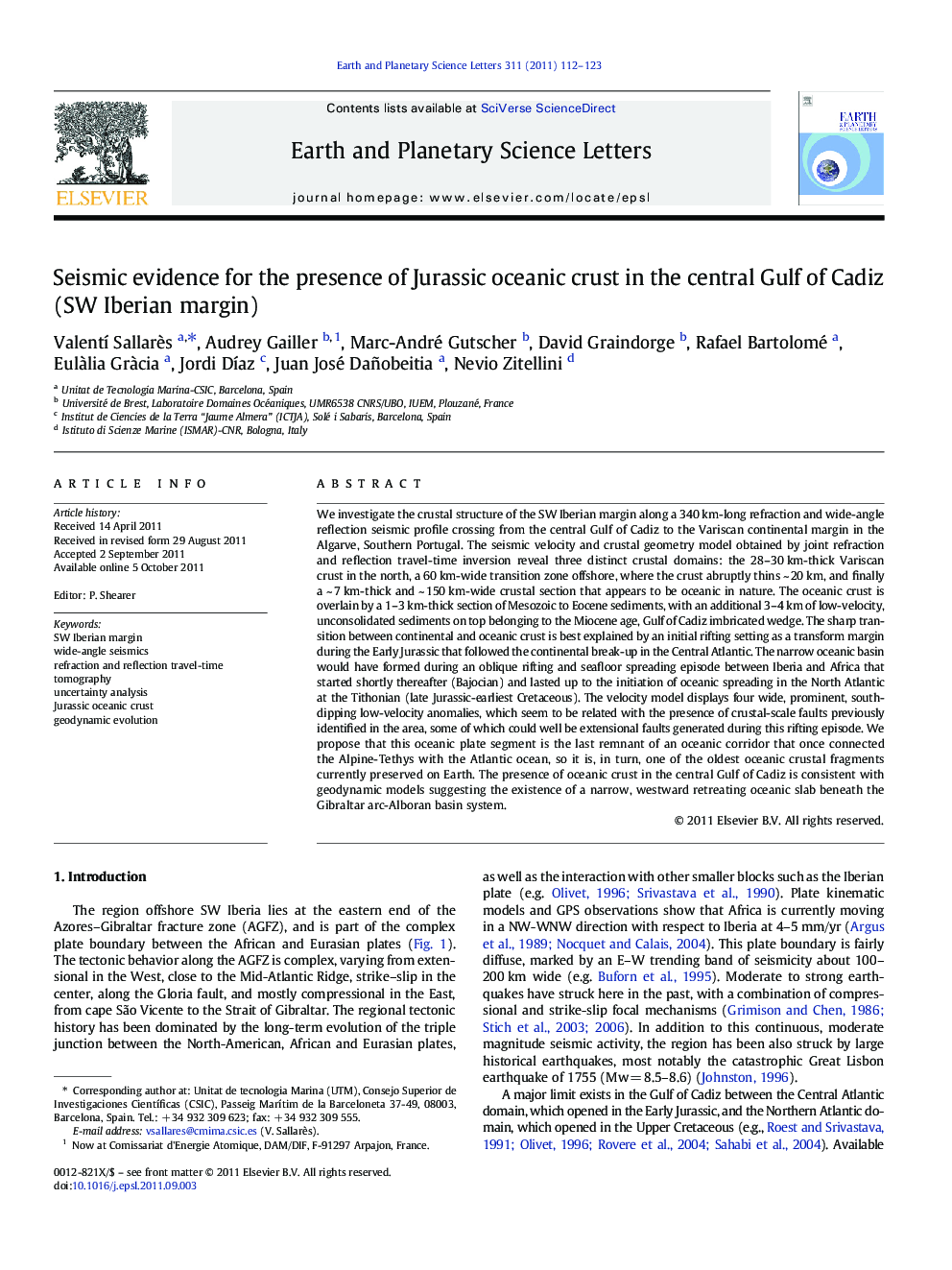| کد مقاله | کد نشریه | سال انتشار | مقاله انگلیسی | نسخه تمام متن |
|---|---|---|---|---|
| 4677685 | 1634818 | 2011 | 12 صفحه PDF | دانلود رایگان |

We investigate the crustal structure of the SW Iberian margin along a 340 km-long refraction and wide-angle reflection seismic profile crossing from the central Gulf of Cadiz to the Variscan continental margin in the Algarve, Southern Portugal. The seismic velocity and crustal geometry model obtained by joint refraction and reflection travel-time inversion reveal three distinct crustal domains: the 28–30 km-thick Variscan crust in the north, a 60 km-wide transition zone offshore, where the crust abruptly thins ~ 20 km, and finally a ~ 7 km-thick and ~ 150 km-wide crustal section that appears to be oceanic in nature. The oceanic crust is overlain by a 1–3 km-thick section of Mesozoic to Eocene sediments, with an additional 3–4 km of low-velocity, unconsolidated sediments on top belonging to the Miocene age, Gulf of Cadiz imbricated wedge. The sharp transition between continental and oceanic crust is best explained by an initial rifting setting as a transform margin during the Early Jurassic that followed the continental break-up in the Central Atlantic. The narrow oceanic basin would have formed during an oblique rifting and seafloor spreading episode between Iberia and Africa that started shortly thereafter (Bajocian) and lasted up to the initiation of oceanic spreading in the North Atlantic at the Tithonian (late Jurassic-earliest Cretaceous). The velocity model displays four wide, prominent, south-dipping low-velocity anomalies, which seem to be related with the presence of crustal-scale faults previously identified in the area, some of which could well be extensional faults generated during this rifting episode. We propose that this oceanic plate segment is the last remnant of an oceanic corridor that once connected the Alpine-Tethys with the Atlantic ocean, so it is, in turn, one of the oldest oceanic crustal fragments currently preserved on Earth. The presence of oceanic crust in the central Gulf of Cadiz is consistent with geodynamic models suggesting the existence of a narrow, westward retreating oceanic slab beneath the Gibraltar arc-Alboran basin system.
► Wide-angle seismic data reveal the presence of oceanic crust in the Gulf of Cadiz.
► It could be Jurassic in age, so one of the oldest oceanic plates on Earth.
► Its presence indicates a connection between the Atlantic and Alpine-Tethys domains.
► Our results are consistent with the presence of a subducted slab beneath Gibraltar.
► Low-velocity anomalies coincide with Jurassic rifting extensional faults.
Journal: Earth and Planetary Science Letters - Volume 311, Issues 1–2, 1 November 2011, Pages 112–123